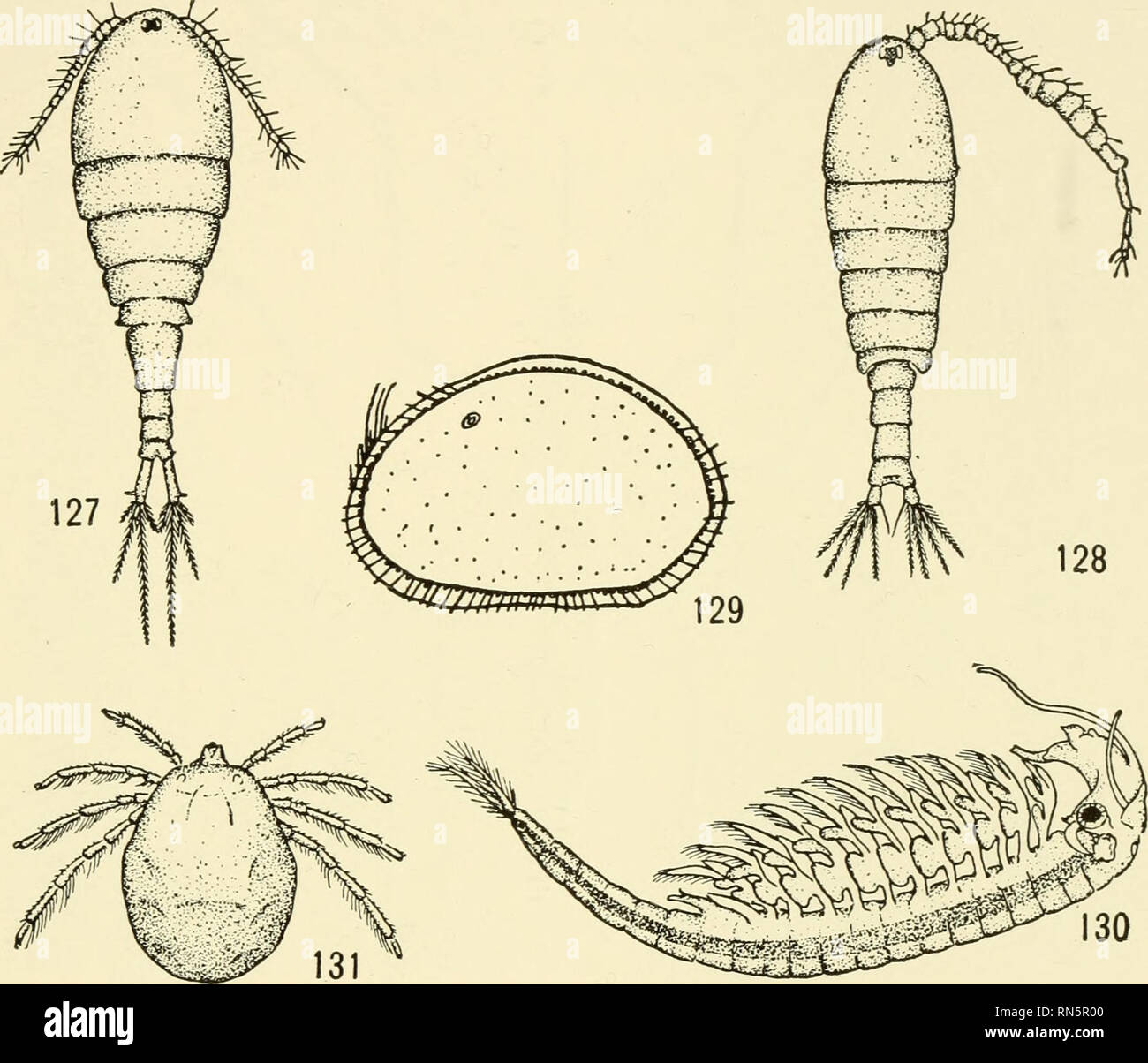. Animal communities in temperate America : as illustrated in the Chicago region; a study in animal ecology. Animal ecology; Zoology -- Illinois Chicago. TEMPORARY POND COMMUNITIES 177 the ostracod (Cyprois marglnata X147) (Fig. 129), and the fairy shrimp (Eubranchipus) (148) (Fig. 130), all of which are characteristic of tempo- rary ponds. Red mites (Fig. 131) are also common (149). Professor Child (unpublished) has noted that the distribution each spring of Eubranchipus and of other temporary pond species is modified. Temporary Grassy Pond Animals Fig. 127.—A temporary pond copepod {Cyclops

Image details
Contributor:
Library Book Collection / Alamy Stock PhotoImage ID:
RN5R00File size:
7.1 MB (288.8 KB Compressed download)Releases:
Model - no | Property - noDo I need a release?Dimensions:
1707 x 1464 px | 28.9 x 24.8 cm | 11.4 x 9.8 inches | 150dpiMore information:
This image is a public domain image, which means either that copyright has expired in the image or the copyright holder has waived their copyright. Alamy charges you a fee for access to the high resolution copy of the image.
This image could have imperfections as it’s either historical or reportage.
. Animal communities in temperate America : as illustrated in the Chicago region; a study in animal ecology. Animal ecology; Zoology -- Illinois Chicago. TEMPORARY POND COMMUNITIES 177 the ostracod (Cyprois marglnata X147) (Fig. 129), and the fairy shrimp (Eubranchipus) (148) (Fig. 130), all of which are characteristic of tempo- rary ponds. Red mites (Fig. 131) are also common (149). Professor Child (unpublished) has noted that the distribution each spring of Eubranchipus and of other temporary pond species is modified. Temporary Grassy Pond Animals Fig. 127.—A temporary pond copepod {Cyclops viridis americanus Marsh); 35 times natural size (after Herrick and Turner). Fig. 128.—The red copepod (Diaptomus stagnalis) from temporary pond; 12 times natural size, left antenna omitted (after Herrick and Turner). Fig. 129—The temporary pond ostracod {Cyprois marginata); 35 times natural size (after Sharp). Fig. 130.—The fairy shrimp (Eubranchipus); 3 times natural size. Fig. 131.—The red mite (Hydrachna sp.); 10 times natural size. by the rainfall of the preceding season. When the rainfall of the pre- ceding season has been great, the temporary pond species are found only in the smallest and highest (above ground-water) ponds such as would. Please note that these images are extracted from scanned page images that may have been digitally enhanced for readability - coloration and appearance of these illustrations may not perfectly resemble the original work.. Shelford, Victor E. (Victor Ernest), b. 1877; Geographic Society of Chicago. Chicago, Ill. : Published for the Geographic Society of Chicago by the University of Chicago Press